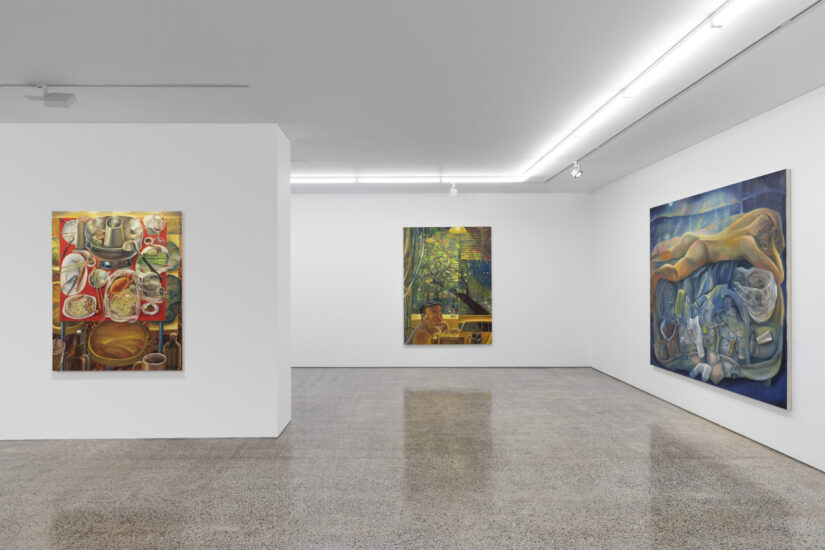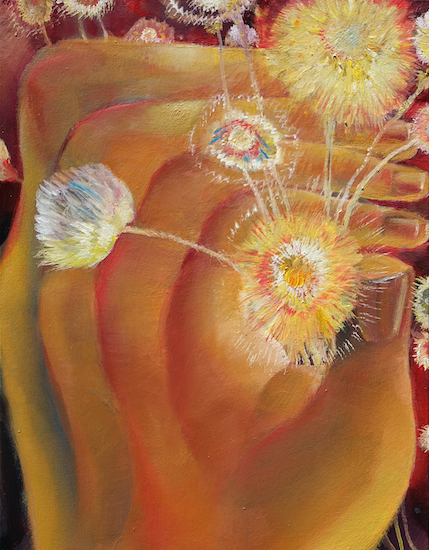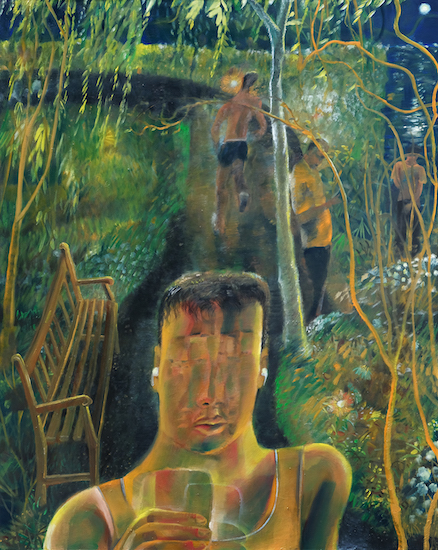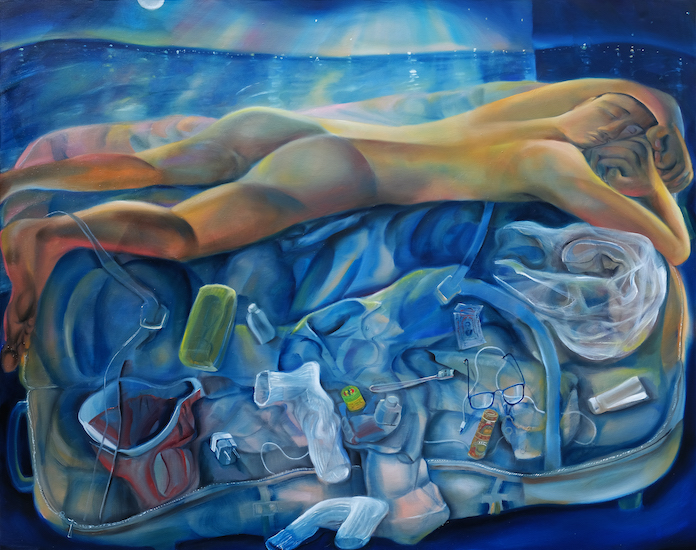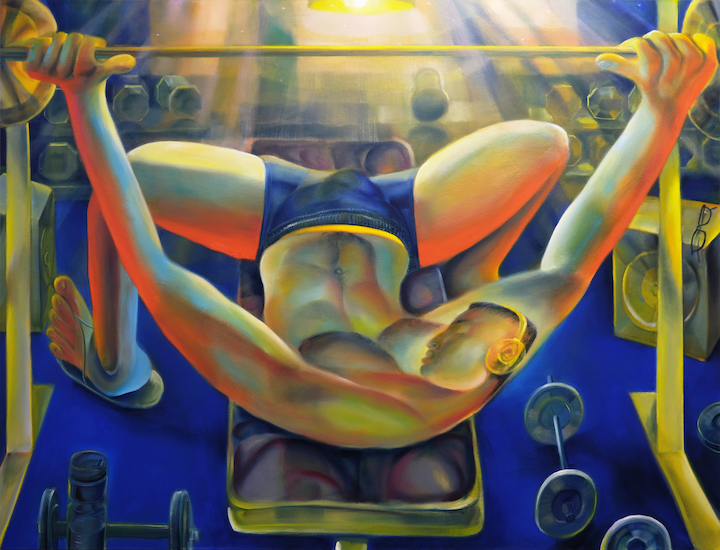Ames Yavuz is pleased to present Body and blood, Alvin Ong’s second solo show in Australia. Widely considered as one of Asia’s most dynamic figurative painters of his generation, Ong captures scenes of restlessness, boredom, desire, and queer intimacy. He playfully combines references to sacred imagery and art history alongside his lived experiences, presenting a new body of work that explores rituals of inclusion and exclusion.
The title Body and blood takes its cue from the artist’s formative years, infused with suggestions of the Catholic iconography he was exposed to growing up in Singapore. The titular work depicts a figure lying recumbent with arms open in reference to the Crucifixion, transported into a context of contemporary gym culture, with its rituals of belonging and the frenzied aestheticization of the body through pain and pleasure. Allusions to devotional images of the Sacred Heart and Mater dolorosa are evident in Heart and Soul, refashioned and reclaimed as a form of self-portrait. These themes are an undercurrent throughout the show, inhabiting a unique velocity and freely moving between the physical and metaphysical. In the words of the artist, “I see the body as a vehicle for desire, but also a vessel for the possible”.
In other works, Ong’s experience living between Singapore and London manifests as a surreal reality, where objects of travel are echoed by objects of rootedness. A suitcase morphs into a bed. A Singaporean suburb merges into the Brighton coastline over a long-distance video call. A bouquet turns into an outpouring of the heart. A festive hotpot reunion merges into the sunset. A park bench is a silent witness to both conventional love and queer intimacy.
Food references and individual objects, scattered throughout the show, also function as markers of identity, nostalgia and cultural memory. This is most evident in Anniversary, painted as a work of remembrance and loss, recording important family festive traditions such as the preparation of bakwan hati babi and buah keluak. Amongst the many details, the artist’s late grandfather anecdotally appears as a housefly perched on a recipe book.
Throughout Body and blood, contrasting moods and moments are stitched together as a palimpsest of memory, sometimes on a single canvas and sometimes juxtaposed on adjoining pieces to highlight the mood swings, contradictions, and anxieties of contemporary urban life. While the monumental Venus is depicted as an orchestra of lights, beats, sticky bodies, sweat and consumption, Jet lag is a work of lethargy, detachment and isolation. These threads of intimacy — or the lack thereof — exemplify Ong’s vocabulary of intimacy and tenderness in the everyday, found in gyms, park benches, clubs, online and offline. These rituals of identity and community invite the viewer to be part of Ong’s private worlds, and yet also implicate them as a voyeur looking from the outside in.
ABOUT THE ARTIST
Alvin Ong (b. 1988, Singapore) is a graduate of the Ruskin School of Art, University of Oxford, UK (2016) and the Royal College of Art, London, UK (2018). His paintings playfully capture quotidian moments of our contemporary world in surreal bodily compositions, playfully combining diverse visual vocabularies. Through vignettes of everyday life, the vocabulary of the mundane is transformed into a site of spectacle, a cabinet of curiosities in which audiences are implicated as flaneur and voyeur.
He was awarded a residency in 2017 with the Royal Drawing School, the 2018 Chadwell Award, and 2019 Ingram Collection Prize for Young Contemporary Talent. In 2022, Ong was a finalist of the Sovereign Asian Art Prize.
His works have been exhibited at the Singapore Art Museum (2007, 2012, 2013), Asian Civilizations Museum, Singapore (2010), Peranakan Museum, Singapore (2015), Northampton Contemporary, UK (2017), National Portrait Gallery, UK (2018), and Royal Academy of Arts, UK (2019).
His works are collected by the Sunpride Foundation (Hong Kong), Peranakan Museum (Singapore), UOB Collection (Singapore), ILHAM Gallery (Malaysia), X Museum (China), Fosun Foundation (China), the Ingram Collection (UK), and the Victoria & Albert Museum, Print Collection (London, UK); and in numerous private collections worldwide.
He currently lives and works in Singapore and London.
